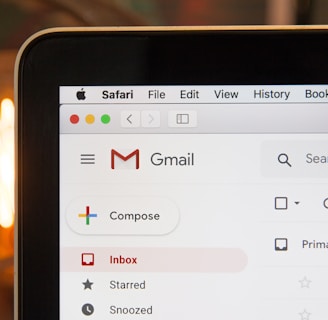How SPF and DKIM Prevent Email Delivery Issues for Business Emails
Struggling with business emails not reaching your clients? Learn how proper SPF and DKIM setup ensures your emails land in inboxes and not the spam folder. Find out why these email authentication tools are essential for smooth communication


Why Your Business Emails Aren’t Reaching Inboxes (and How DKIM and SPF Can Help)
Are you running into issues where your business emails just aren’t reaching your clients or customers? Or maybe they’re getting flagged as spam, even though they’re perfectly legitimate? You might be facing an issue with how your email is authenticated. The good news is that the solution is simpler than you might think!
The Problem: Email Authentication
In today’s world, email providers like Gmail, Outlook, and others use a range of tools to figure out if an email is genuine or potentially malicious. If your business email isn’t properly authenticated, those tools might decide your email is suspicious, even if it’s not.
This is where SPF and DKIM come in.
What Are SPF and DKIM?
They sound technical, but let’s break it down simply:
SPF (Sender Policy Framework): This is like a list of who’s allowed to send emails on behalf of your business domain (e.g., yourcompany.com). When you send an email, the recipient’s email server checks if the sender is on that approved list. If not, your email could be rejected or marked as spam.
DKIM (DomainKeys Identified Mail): Think of DKIM as a special stamp that proves the email hasn’t been tampered with. It adds a digital signature to your emails. When the email is received, the recipient’s server checks if the signature is valid. If it’s not, the email might not reach the inbox.
Why Do These Matter?
If SPF and DKIM aren’t set up correctly for your domain, email servers might not trust the emails coming from your business. This can lead to:
Emails being flagged as spam.
Emails not being delivered at all.
A lack of trust from your customers who might think your emails are unsafe.
Signs You Might Have an SPF or DKIM Issue
Customers or clients aren’t receiving your emails.
Your emails end up in spam folders often.
You notice an increase in bounced emails (when emails are returned as undeliverable).
How to Fix It
Setting up SPF and DKIM involves adjusting the settings in your domain’s DNS (Domain Name System). If you’re not familiar with the technical side of this, it’s a good idea to consult your IT team or domain provider.
But don’t worry—once they’re set up correctly, it can significantly improve the chances of your emails reaching their intended destination.
Bottom Line: It’s Essential
Making sure your SPF and DKIM records are properly configured is a small but critical step to ensure your business communication runs smoothly. Without them, you risk your important emails never making it to your customers’ inboxes.
If you’re experiencing email delivery problems or aren’t sure if your SPF and DKIM settings are correct, it’s worth taking a closer look. Addressing these issues early can save you a lot of headaches in the long run.
Reliable IT support for you
martin@workhorseit.co.uk
07528727527
© 2024. All rights reserved.
